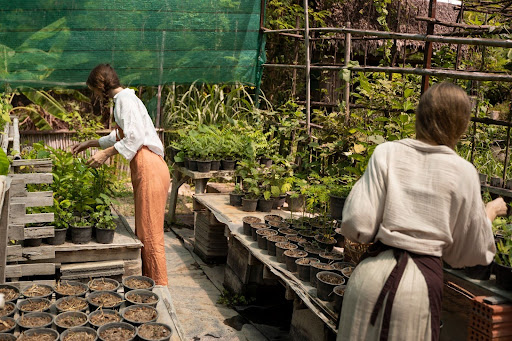
Creating a new garden is an exciting project that lets you connect with nature while adding beauty to your outdoor space. Whether you’re a seasoned gardener or starting fresh, choosing the right plants is key to making your garden thrive. With careful planning and plant selection, you can ensure your garden is vibrant, low-maintenance, and suitable for your local climate.
For making new garden, one needs to include plants that fit one’s style and require low maintenance. Here are some of the best plants to help you create a perfect garden.
1. Flowering Perennials for Year-Round Color
Perennials are perfect for a new garden, as they come back yearly and will save you in time and labor. Consider the following:
Lavender: Such a pretty plant that smells wonderful and blooms bright purple flowers. It’s hardy and does well in sunny spots.
Black-eyed Susan: Bright yellow flowers that are easy to care for and attract bees and butterflies.
Peonies: Flowers display a beautiful, full bloom in springtime and add class to any garden.
These plants are multi-purpose and work well as borders, focal points, or accents around your garden.
2. Evergreen Shrubs That Provide Structure
Evergreens provide structure and greenery year-round and are excellent plants to begin a new garden. Some popular choices include:
Boxwood: Classic shrub that can be shaped into hedges or topiaries.
Juniper: Hardy shrub in many shapes and sizes, great for ground cover or adding height.
Holly: Known for its glossy green leaves and red berries, holly adds festivity to a garden.
These plants ensure your garden looks lively, even in the off-season.
3. Herbs for Practical Beauty
If you love cooking, incorporating herbs into your garden is a practical and beautiful idea. Easy-to-grow herbs include:
Basil: An essential for foodies, basil prefers sunny areas.
Mint: Mint is a versatile herb that spreads fast, so it’s best grown in containers.
Thyme: Thyme is ideal for garden borders; it’s drought-resistant and aromatic.
Herbs serve their purpose and also give a beautiful fragrance to your garden.
4. Native Plants for Low Maintenance
Native plants are adapted to your local environment, which makes them much easier to maintain and good for the ecosystem. When making new gardens, research native plants in your area. Popular choices may include:
Coneflowers: These flowers are hardy, colorful, favored by pollinators, and drought-resistant.
Milkweed: This plant is native and beneficial to butterflies and other helpful insects.
Wild grasses: Wild grasses add texture and movement to your garden with the least care.
Native plants are eco-friendly, helping create a garden hospitable for biodiversity.
5. Low-Maintenance Ground Covers
Ground cover plants inhibit weeds, help retain soil moisture, and beautify the ground area. A few of the good options include:
Creeping Thyme: scented, flowering ground cover that works great between stepping stones.
Sedum: hardy succulent tolerating different conditions.
Hostas: These come in several sizes and shades and are good plants for shady spots.
Using ground covers can lend sustainability and visual cohesion to your garden.
6. Trees for Shade and Privacy
Add trees to give your garden shade, privacy, and a focal point. Determine which trees to include in your garden based on size and climate:
Japanese Maple: This tree is graceful in foliage, adding class to any garden.
Magnolia: With their aromatic flowers, magnolias are never out of style in gardens.
Citrus Trees: For those with warm climates, citrus trees add beauty and fruit to your garden space with lemons and oranges.
Trees add to the overall aesthetics and functionality of your garden.
How to Make New Gardens Thrive
Understand your soil type: Have your soil tested to see what type it is and then select plants that like those conditions.
Consider sun and shade: Place plants that are considered to be sun lovers in the sun, while plants that can handle shade go to the darker corners.
Group plants by water needs: This would ensure efficiency in watering and reduce the possibility of overwatering.
Plan for growth: Leave room for plants to grow and thrive over time.
Conclusion
Making a new garden design is a rewarding journey, which begins with choosing plants. Perennials, shrubs, herbs, and native species will come together in a beautiful, functional, and low-maintenance garden. Think of your garden layout and climate when selecting plants that consider personal preferences.
Ready to get started with your gardening? At Right Choice, we have expert advice and quality plants to help you create the perfect outdoor space. Let us guide you in making new gardens that bring joy and beauty to your home. Let Right Choice help you make your garden dreams come true today!